Its kinda funny, these Wilton's do turn into a conversation piece when people walk into the garage. Both the informed and the uninformed like to fiddle with them. Guess its OK though, it keeps their paws off of the other equipment.
-
Welcome back Guest! Did you know you can mentor other members here at H-M? If not, please check out our Relaunch of Hobby Machinist Mentoring Program!
- Forums
- THE PROJECTS AREA
- PROJECT OF THE DAY --- WHAT DID YOU DO IN YOUR SHOP TODAY?
- Project of the Day Mega-Thread Archives
You are using an out of date browser. It may not display this or other websites correctly.
You should upgrade or use an alternative browser.
You should upgrade or use an alternative browser.
2021 POTD Thread Archive
- Thread starter Gaffer
- Start date
- Joined
- Aug 6, 2015
- Messages
- 3,908
maybe he might find he has what he needs right in his junk bin if he worked in imperial ...
maybe .... or maybe he has his junk arranged in metric ... who knows... I did see a few Porches and VW (nice old) in his garage...
so maybe I should shut up...
You were correct. I did have something already in the pile that works... just need to do the straight knurl and be done!
I first found the longer piece, but after a little bit more search, there was another one that was even closer to correct size.
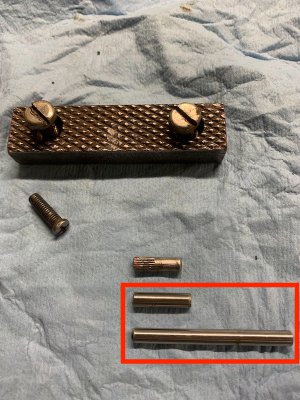
The other stuff is out because I am getting ready to go to ACE Hardware for replacement bolts for the jaws and the horseshoe washer...
- Joined
- Nov 25, 2015
- Messages
- 8,407
Don't use that to put knurling into. Those are case hardened dowel pins. You will destroy your knurl. Put a drop of loctite (removeable) on it.You were correct. I did have something already in the pile that works... just need to do the straight knurl and be done!
I first found the longer piece, but after a little bit more search, there was another one that was even closer to correct size.
View attachment 384098
The other stuff is out because I am getting ready to go to ACE Hardware for replacement bolts for the jaws and the horseshoe washer...
- Joined
- Aug 6, 2015
- Messages
- 3,908
Thank you for saving my knurling wheels!!! A drop of Loctite it is!Don't use that to put knurling into. Those are case hardened dowel pins. You will destroy your knurl. Put a drop of loctite (removeable) on it.

- Joined
- Nov 25, 2015
- Messages
- 8,407
NP, dowel pins are case hardened, but also pretty hard inside. Not as hard. so you can't machine easily.Thank you for saving my knurling wheels!!! A drop of Loctite it is!
you need carbide, or ceramic to turn, or an abrasive (wheel, disc)
- Joined
- Nov 24, 2014
- Messages
- 3,202
<snip The other stuff is out because I am getting ready to go to ACE Hardware for replacement bolts for the jaws and the horseshoe washer...
I always replace mine with socket head screws of some type because they are stronger and easier to tighten. You may have to look for Low Height or button head socket head screws (try McMaster-Carr) if the counterbores in the jaws are too shallow for standard height. Factory steel jaws are usually hardened making them difficult to modify the counterbores. YMMV
- Joined
- Aug 6, 2015
- Messages
- 3,908
I always replace mine with socket head screws of some type because they are stronger and easier to tighten. You may have to look for Low Height or button head socket head screws (try McMaster-Carr) if the counterbores in the jaws are too shallow for standard height. Factory steel jaws are usually hardened making them difficult to modify the counterbores. YMMV
Normal 1/4"-20x5/8" socket hex bolts worked like a charm.
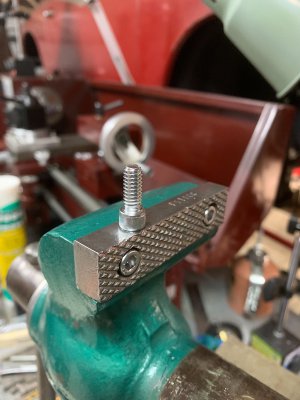
These only needed a quick trip to the wheel grinder... on a side note... I really want to get a better finish on the handle and screw cap... but that means taking the handle apart... nah, looks fine like that...
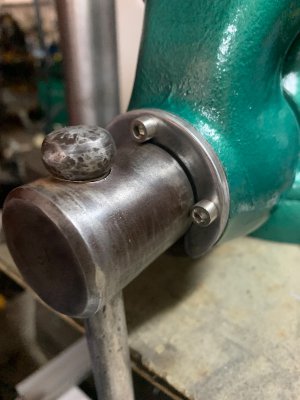
After removing the paint, noticed that the jaws have the part/model number stamped on them...
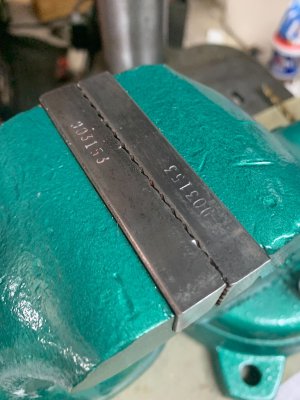
Okay... now this is officially completed...
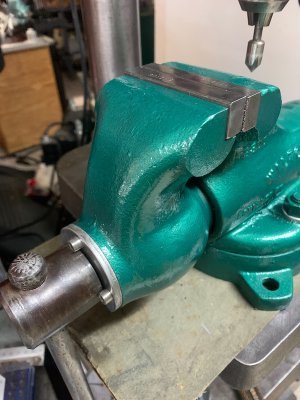
A friend asked me for some brackets... 1/4"x1-1/4"x7" with 1/2" holes on each end... Great opportunity to practice...
Cut the pieces with the portable bandsaw (still need to make the tilting stand for it...)
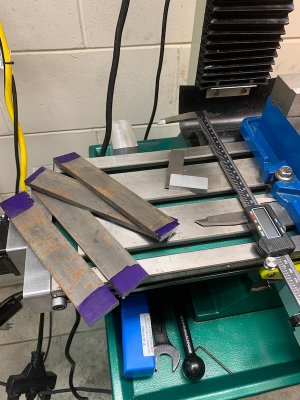
Hole's center needed to be 5/8" from the border...
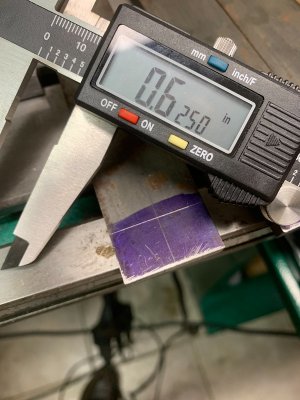
Got to use the mill stop... I need to make a T-nut that works for that bolt... had to improvise to hold it down. But it worked great! Center drill bit...
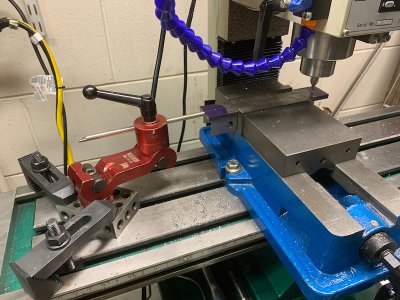
Then drilled using a 31/64" drill bit... followed by a 1/2" reamer. First time using a reamer!
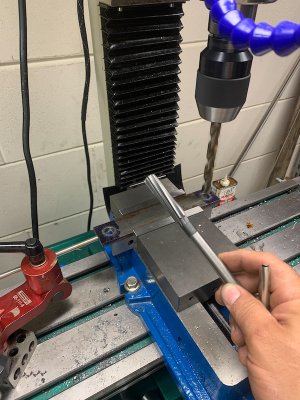
Countersink because not doing that would be uncivilized...
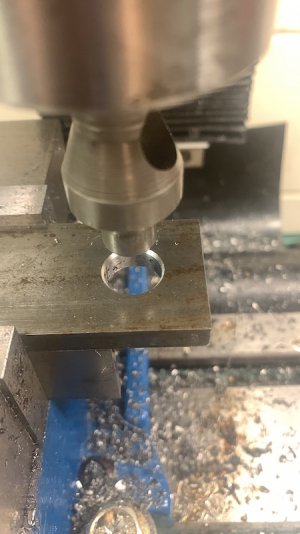
- Joined
- Aug 6, 2015
- Messages
- 3,908
For the radius cut, since I do not have a rotary table (yet... on its way)... I needed it to be on center, and at the right distance from the milling bit...
I came up with something that probably was not as safe as it should have been... Got a block of aluminum scrap that I have (who I am kidding, all the material I have is from scraps, lol)... Drilled a 1/2" hole (same process, 31/64" drill bit first, then followed by 1/2" reamer), 1.2" deep... and inserted a hardened steel dowel pin... Adjusted the bit and gave it a try...
I must say, on the first one, I quickly learned the difference from conventional milling to climb milling
 . I probably skipped a hear beat when that mill got a hold of the part... luckily I stopped it quickly and no harm was done (outside of just needing a change of underwear)...
. I probably skipped a hear beat when that mill got a hold of the part... luckily I stopped it quickly and no harm was done (outside of just needing a change of underwear)...
But I was able to do them all with this approach...
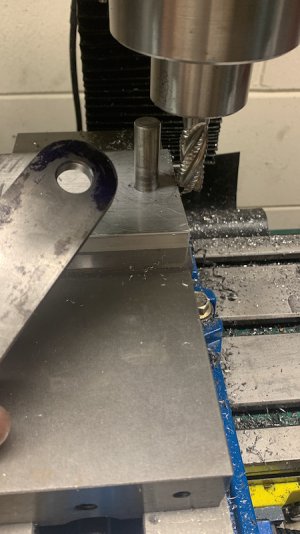
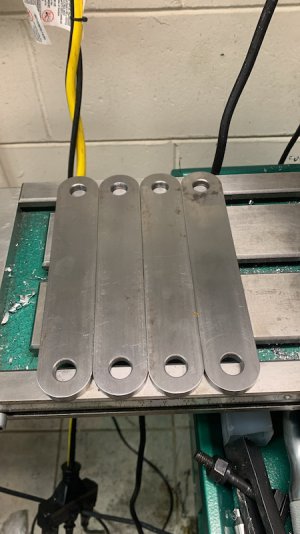
Even took a video to show folks how NOT to do this... First and last time I try it like this... next time I will have a rotary table with the part secured and the table doing the turning...
I came up with something that probably was not as safe as it should have been... Got a block of aluminum scrap that I have (who I am kidding, all the material I have is from scraps, lol)... Drilled a 1/2" hole (same process, 31/64" drill bit first, then followed by 1/2" reamer), 1.2" deep... and inserted a hardened steel dowel pin... Adjusted the bit and gave it a try...
I must say, on the first one, I quickly learned the difference from conventional milling to climb milling
But I was able to do them all with this approach...


Even took a video to show folks how NOT to do this... First and last time I try it like this... next time I will have a rotary table with the part secured and the table doing the turning...
Last edited:
- Joined
- Nov 25, 2015
- Messages
- 8,407
yep, I have done that same thing to put radius on parts. yea, never climb on hand hold, and if your table has a lot of backlash, tighten your gibs if you climb cut to tighten things up a little (not talking about a radius just in general).
Did you really need to ream his brackets. Save your reamers for important work, unimportant stuff just drill.
Did you really need to ream his brackets. Save your reamers for important work, unimportant stuff just drill.

